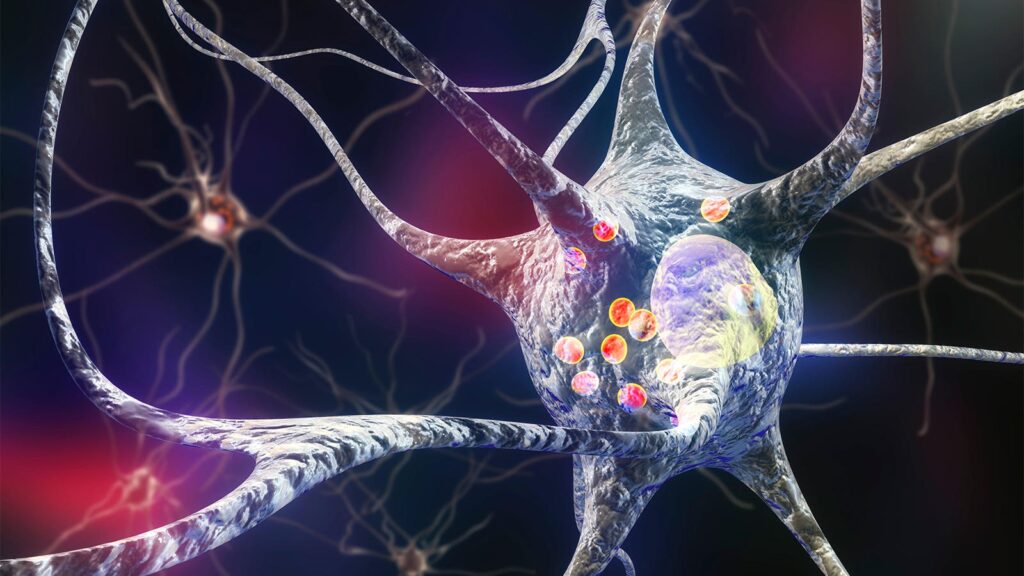An investigational brain-penetrant, pegylated analogue of the glucagon-like peptide-1 (GLP-1) receptor agonist exenatide (Byetta, Bydureon) known as NLY01 did not lead to improvement in Parkinson’s disease symptoms compared with placebo, a phase II trial showed.
Neither 2.5 mg or 5.0 mg of weekly NLY01 injections showed any difference from placebo in the sum of Movement Disorder Society Unified Parkinson’s Disease Rating Scale (MDS-UPDRS) parts II and III scores at 36 weeks, according to Andrew McGarry, MD, of Rowan University in Camden, New Jersey, and colleagues.
Compared with placebo, the difference at 36 weeks was -0.39 (95% CI -2.96 to 2.18, P=0.77) for 2.5 mg and 0.6 (-2.28 to 3.00, P=0.79) for 5.0 mg, McGarry and co-authors reported in Lancet Neurology.
However, a subgroup analysis suggested the possibility of motor benefit in participants under age 60, the researchers said.
The GLP-1 receptor is present in the brain, and agonist activity is thought to be anti-inflammatory by reducing microglia activation. Exenatide is a GLP-1 receptor agonist approved to treat type 2 diabetes.
“In a database of more than 100,000 individuals with diabetes, those using GLP-1 receptor agonists had a 62% lower risk of developing Parkinson’s disease,” McGarry and colleagues pointed out. In 2017, a single-center trial showed that exenatide had positive effects on Parkinson’s motor scores that continued beyond the period of exposure.
People with type 2 diabetes have an increased risk of Parkinson’s disease, particularly those with early diabetes onset (ages 25-44) and a low BMI (below 18.5), noted Claudia Trenkwalder, MD, and Brit Mollenhauer, MD, of the University Medical Center Göttingen in Germany, in an accompanying editorial.
“The Parkinson’s disease course can be faster and more severe for individuals with type 2 diabetes than for those without type 2 diabetes, and it can be characterized by motor fluctuations in response to treatment occurring earlier and a more rapid decline in cognitive function,” Trenkwalder and Mollenhauer wrote.
Trials like the NLY01 phase II study that investigate the preventive potential of existing drugs are urgently needed, the editorialists observed.
“One strategy to move forward with GLP-1 agonists could be to better select the participants with Parkinson’s disease — e.g., young people with high inflammatory activity who would benefit most from the targeted metabolic and inflammatory mechanism of GLP-1 agonism,” they suggested.
“In addition to carefully selecting participants at an appropriate disease stage, improvements to the design of studies in people with established Parkinson’s disease need to be pursued,” they added.
McGarry and co-authors randomized 255 people with early untreated Parkinson’s disease to subcutaneous 2.5 mg or 5.0 mg NLY01, or placebo (85 people in each group). Participants were told to administer the drug or placebo once a week for 36 weeks. Mean age was 61.5 and more than half of participants were men.
The primary efficacy endpoint was change from baseline to week 36 in the sum of MDS-UPDRS parts II and III scores. Part II assesses motor aspects of experiences of daily living and part III is a motor examination. Each MDS-UPDRS subscale has a rating from 0 (normal) to 4 (severe).
Secondary endpoints included MDS-UPDRS part I scores (non-motor aspects of experiences of daily living), clinical and patient impressions of severity, cognitive test scores, and dopamine transporter imaging parameters. No secondary endpoint differed from placebo at either dose.
NLY101 was generally safe and well tolerated. Gastrointestinal disorders emerged in 61% of the 2.5-mg dose group and 75% of the 5.0-mg group, most frequently nausea.
Participants under age 60 showed nominally significant reductions from baseline in the sum of MDS-UPDRS parts II and III scores at 36 weeks compared with placebo, “a finding that could be driven in part by a greater decline in the younger placebo group,” McGarry and colleagues acknowledged. “Further studies should look to test a younger population for potentially better treatment outcomes.”
The phase II trial may have been too short to see effects clearly, the researchers noted. Exenatide-PD3, a phase III, 2-year study of exenatide in 200 people with mild-to-moderate Parkinson’s disease on standard treatment, is underway; results are expected in 2024.
-
Judy George covers neurology and neuroscience news for MedPage Today, writing about brain aging, Alzheimer’s, dementia, MS, rare diseases, epilepsy, autism, headache, stroke, Parkinson’s, ALS, concussion, CTE, sleep, pain, and more. Follow
Disclosures
Funding for the study came from D&D Pharmatech-Neuraly.
McGarry and several co-authors received salary support from Neuraly for their work on the study. Other co-authors were either Neuraly employees, employees of the contract research organization, or received research support from Neuraly. One co-author received stock and equity in D&D Pharmatech.
Editorialists reported relationships with General Electric Healthcare, Bial, Roche, Biogen, AbbVie, Amprion, the Michael J. Fox Foundation for Parkinson’s Research, Aligning Science Across Parkinson’s, AbbVie, Boehringer, Britannia, Ono, Convatec, UCB, Alexion, EU Horizon 2020, ERA-NET BRAVA, and the International Parkinson and Movement Disorder Society.
Primary Source
Lancet Neurology
Source Reference: McGarry A, et al “Safety, tolerability, and efficacy of NLY01 in early untreated Parkinson’s disease: a randomized, double-blind, placebo-controlled trial” Lancet Neurol 2024; DOI: 10.1016/S1474-4422(23)00378-2.
Secondary Source
Lancet Neurology
Source Reference: Trenkwalder C and Mollenhauer B “The long road to neuroprotection for Parkinson’s disease” Lancet Neurol 2024; DOI: 10.1016/S1474-4422(23)00462-3.
Please enable JavaScript to view the

